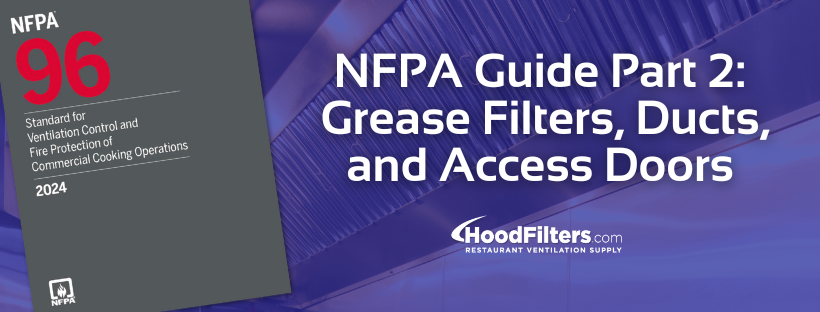Welcome to the second installment of our NFPA 96 Guide series, where we continue to explore the standards that safeguard commercial kitchens from fire hazards. In our first blog, we covered Commercial Kitchen Exhaust Systems and Grease Removal Essentials. Moving on, we now focus on grease filters, ducts, and access doors—key components crucial for maintaining a clean, efficient, and compliant kitchen environment. Furthermore, this segment examines the critical role that grease filters play in managing grease-laden vapors, a common byproduct in busy commercial kitchens. Following NFPA 96 guidelines for these components like grease filters not only ensures safety but also optimizes kitchen efficiency. Be sure to catch the final installment, which will explore compliance with upblast exhaust fans and hinge kits. Continue reading
Tag: nfpa 96
One of the most important regulatory codes to know in the restaurant industry is the NFPA 96 Fire Code. These are the cleaning and maintenance standards by which fire marshals inspect commercial cooking exhaust and restaurant ventilation systems. A major component of keeping your restaurant ventilation up to code is checking on levels of dangerous grease build-up in the vent hood system. But how do you know when it’s time to clean your exhaust system? Read on to learn about the handy Omni Containment Stainless Steel Grease Depth Gauge Comb that can help ensure you are adhering to NFPA 96 regulations.
Fats, Oils, and Grease
If your restaurant or commercial kitchen cooking appliances produce any grease, fat or oil, the vapors from your cooking will discharge along with the air you are exhausting through your upblast exhaust fan. If your exhaust fan is located on a roof, it is required to have some form of a grease containment system installed. Learn more about why rooftop grease containment is required and the variety of options available to you for keeping your ventilation system in compliance with rules and regulations including the NFPA 96 fire code. Continue reading


